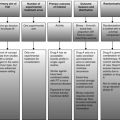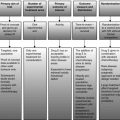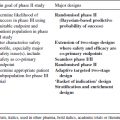11 Sarah Brown and Steve Schey The outlook for patients with multiple myeloma relapsing after optimal therapy with thalidomide, lenalidomide and bortezomib is poor, and patients with disease refractory to initial treatments have an especially poor prognosis. There is no consensus on the optimal therapy for these patients. Drug D is a uniquely structured alkylating anti-tumour agent that lacks cross-resistance with other alkylating agents. There is very good evidence to show that combinations of an alkylator, thalidomide and corticosteroid are effective in treating patients with relapsed/refractory multiple myeloma (Facon et al. 2007; Palumbo et al. 2006, 2008). Drug D in combination with thalidomide and dexamethasone is therefore proposed as a combination therapy for phase II investigation in this population of patients. Data are available suggesting that drug D adds to the activity of other combination therapies; the optimal dose of drug D as combination therapy is not, however, known. A dose selection study is proposed to consider the optimal dose of drug D in combination with thalidomide and dexamethasone (DTD). A phase II selection study of DTD (dose 1) versus DTD (dose 2) is proposed. Mechanism of action: Drug D is an alkylating agent which, when given in combination with thalidomide and dexamethasone, is expected to induce disease response. Aim of treatment: The ultimate aim of treatment in this population of patients is to improve overall survival. Whilst it may be demonstrated that a drug may be active ex vivo, this is not of value unless it is at doses that can be achieved in vivo. Progression-free and event-free survival may also be desirable endpoints. Whilst activity can often be demonstrated ex vivo, for a drug to be effective as a treatment, it needs to be shown that the drug can be delivered in patients at the dose required without unacceptable toxicity. It is known from previous studies of similar treatments that patients may have difficulty receiving a full course of treatment due to cumulative haematological toxicities. Such cumulative toxicity, emerging in later cycles, may not be identified in phase I studies where the tolerability usually focuses on cycle 1. It is, therefore, important to demonstrate not only anti-tumour activity, indicating potential to improve overall survival, but also acceptable tolerability and the ability to deliver the treatment, when recommending an optimal dose. Single or combination therapy: Drug D is to be given in combination with thalidomide and dexamethasone. Biomarkers: Although aberrant expression of phenotypic, cytogenetic or molecular markers can be used to define poor prognosis disease, there are no agreed biomarkers consistently demonstrated to be associated with response or prognosis for drug D, or with regard to outcome measures of disease activity in this setting, to enable patient enrichment or alternative assessment of therapeutic activity. Paraprotein is used as a surrogate marker of tumour bulk in secretory myeloma whilst the serum-free light chains can be utilised in the less common light-chain myeloma or non-secretory disease. They are monitored serially during treatment to assess the response to treatment but are less sensitive than immunophenotyping in identifying minimal residual disease. Currently, there is a lack of robust, prospective data for the use of alternative biomarkers but validation studies are ongoing. The primary objective of the study is to identify a dose of drug D given in combination with dexamethasone and thalidomide that is active and tolerable and can be consistently delivered to patients with relapsed/refractory multiple myeloma, with the intention of taking that combination forward into studies in newly diagnosed patients. A randomised phase II selection trial incorporating proof of concept for the de novo study is therefore proposed. Although there is only one experimental drug under investigation, there are two doses of drug D being considered. There are, therefore, two experimental arms. Drug D, and other similar drugs used to treat myeloma, may be associated with cumulative toxicity. It is important to demonstrate that drug D in combination with thalidomide and dexamethasone is both sufficiently active and tolerable, in terms of being deliverable; therefore, an assessment of tolerability is incorporated as a primary outcome measure in this trial. This is seen as being equally as important as demonstrating activity, therefore joint primary outcome measures of toxicity/tolerability and activity will be used. The tolerability of DTD may be measured by the ability to deliver drug D in full dose and on time for at least two cycles, that is, a binary outcome measure. If a patient is unable to receive the first two cycles of treatment without any haematological toxicities requiring dose delay or reduction, this is an indication that there are likely to be future tolerability issues with the combination, requiring dose reductions or delays. Drug D is a cytotoxic agent expected to induce disease response. There are, unfortunately, limited data regarding the use of surrogate endpoints associated with overall survival in relapsed refractory multiple myeloma patients. However, overall response rate, in combination with substantial response duration, has been recommended as an appropriate endpoint for accelerated approval of new myeloma agents by the US Food and Drug Administration (Anderson et al. 2005), and response rates (complete response plus partial response) have been recommended as benchmark outcomes in trials in the relapsed and refractory setting (Anderson et al. 2007). It was therefore deemed appropriate to base the assessment of activity on the outcome measure of partial response or, better, a binary outcome measure assessed over up to six cycles of treatment with DTD. Dual primary outcome measures of activity and tolerability will be assessed using the endpoints of partial response or better and ability to tolerate at least two cycles of treatment, respectively. Randomisation will be performed between DTD (dose 1) and DTD (dose 2), for the purpose of dose selection. Although drug D is to be given in combination with both thalidomide and dexamethasone, there is no standard therapy available for this population of patients. As previously highlighted, the aim of the current trial is to identify a dose of drug D in combination with thalidomide and dexamethasone that is sufficiently active and tolerable to warrant investigation in the de novo setting. It is expected that the subsequent study in the de novo setting would be a further randomised trial, with a conventional control arm to establish the benefit, or otherwise, from drug D administered at an optimal dose in combination with thalidomide and dexamethasone compared to ‘standard therapy’. As such, no conventional ‘control’ arm is incorporated in the current trial, since the aim of the study is not to quantify the benefit, or otherwise, of drug D in combination with thalidomide and dexamethasone, over and above a current standard therapy, but to provide proof of concept data. Historical control data are available from two large randomised phase III studies in a similar population of patients, providing initial data on which to base the assumptions made within the current trial. Rejected designs:
Dose selection in advanced multiple myeloma
Stage 1 – Trial questions
Therapeutic considerations
Primary intention of trial
Number of experimental arms
Primary outcome of interest
Stage 2 – Design components
Outcome measure and distribution
Randomisation
Design category
Stay updated, free articles. Join our Telegram channel

Full access? Get Clinical Tree






